9 Proven Tips to Attract Nesting Birds
Updated: Jun. 30, 2022
Learn how to attract nesting birds to visit your backyard, including robins, bluebirds and wrens, with these helpful tips from readers.
Offer Several Birdhouses
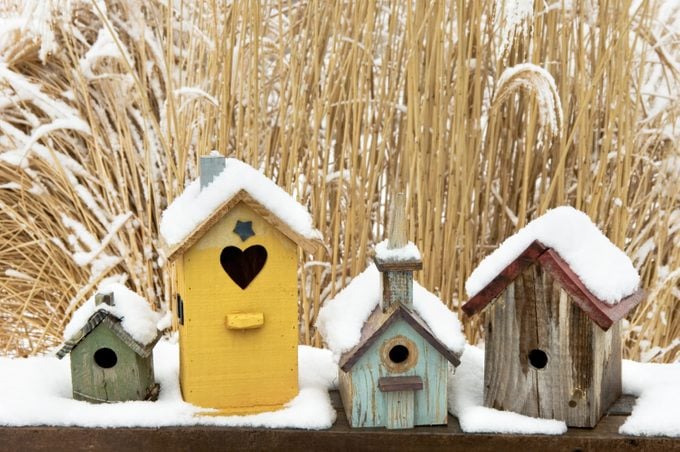
To attract nesting birds, set up several birdhouses throughout your yard. Be sure to use different-size entrance holes so different species of birds, such as wrens and woodpeckers, can find a house to use. —Gary Clark, Knowlton, Quebec
Learn how long baby birds stay in the nest and more nest facts.
Choose Birdhouses That Attract Multiple Species
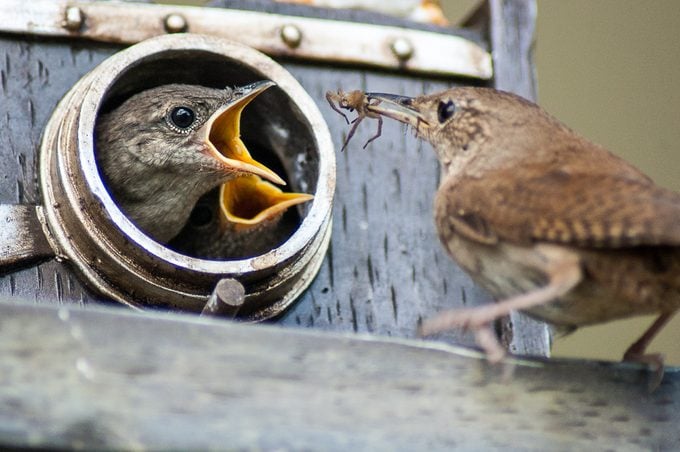
Chickadees and wrens use the same kind of birdhouse. If it says “wren house,” it’ll work for both species. —Rob Ripma
Learn how to attract owls to nest in your yard.
Attract Friendly Nesting Neighbors
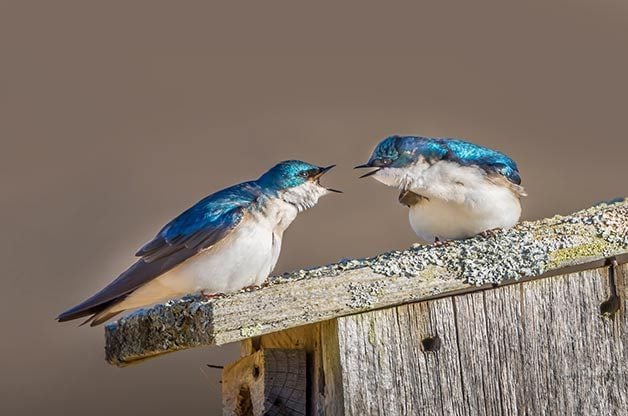
Many species of birds will not nest next to each other. But bluebirds and tree swallows are a different story. I place two bluebird houses 15 feet away from each other. That way bluebirds get one nest box and tree swallows often willingly inhabit the other. They coexist harmoniously, yet other bully birds like house sparrows stay away. —Shirley Barribeau, Goodman, Wisconsin
Find out the best place to put a bluebird house.
Hang Up Baskets
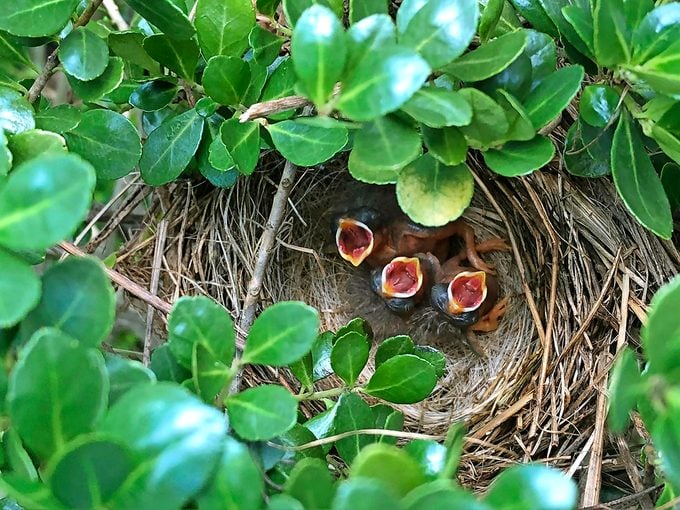
We’ve increased the number of house finches nesting in our yard by wiring small strawberry baskets in the corners of the awnings on our house. We put up four baskets one year and watched 38 house finch fledge from the nests. During winter, some finches even roost in them. —Doris Bartel, Hillsboro, Kansas
Robins often nest in the woven baskets we mount outside. Turn the baskets on their sides and attach them to a wall with a few screws. Mount them under an overhang to protect the birds from the elements. —Connie Moore Medway, Ohio
Will a robin use a bird house?
Add a Bird Bath and Bushes
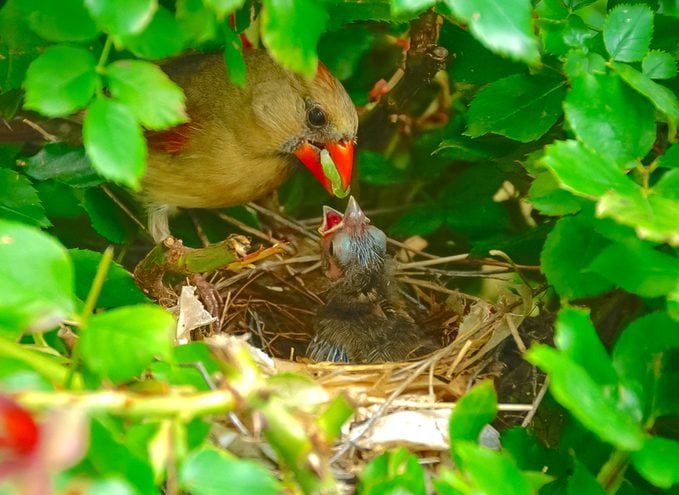
The secret to attracting lots of nesting birds is offering a variety of plants. Grow different kinds of flowers, berry bushes and trees, and keep your bird bath sparkling clean. —Audrey Anderson Boyceville, Wisconsin
Cardinals like to nest in low shrubs and bushes. Check out proven ways to attract cardinals.
Try Birdhouse Gourds
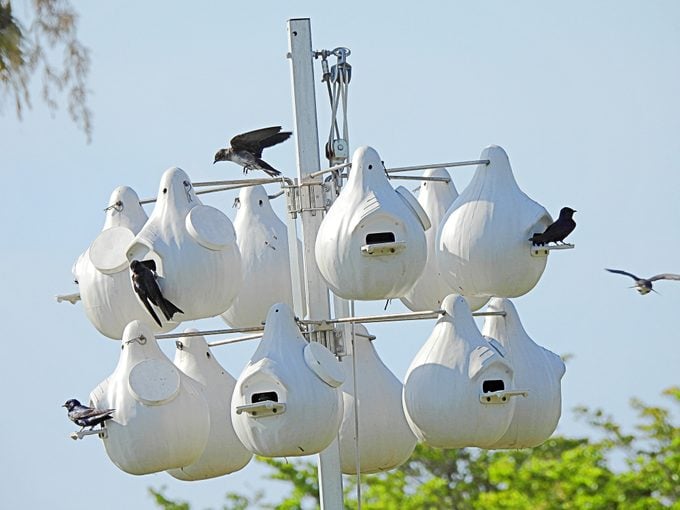
Paint purple martin gourd birdhouses white because it reflects the sun’s rays and keeps the houses cooler. I also place the entrance holes in different locations in each gourd so the purple martins can determine which house is theirs. —Victor Stoll, Finger, Tennessee
Be a good bird landlord with a purple martin house.
Keep Nest Boxes Clean
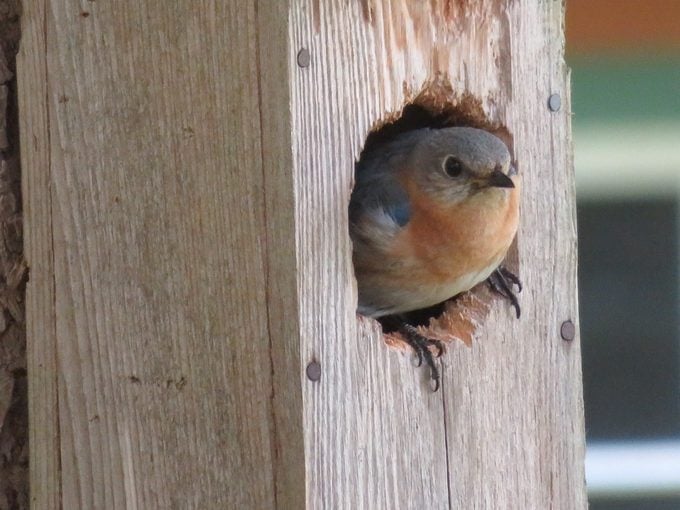
Because bluebirds build new nests for each brood, clean out the old one after the young leave. This encourages a second and third nest in the same house during a single nesting season. —Bernice Maddux, Weatherford, Texas
Check out super cute photos of baby birds you need to see. Plus, learn about what baby birds eat.
Secure Birdhouses to Trees
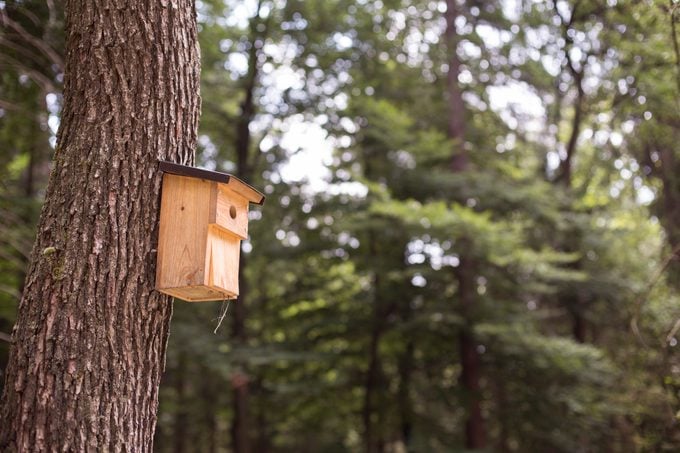
I secure nest boxes to trees by wrapping bungee cords around the trunks. It looks nice, holds firmly and doesn’t damage the tree the way nails do. Once nesting season is over, I can remove the boxes and store them until next year. — Clyde Keeler Lanesville, Indiana
Did you know: Most birds other than wrens and purple martins dislike swaying birdhouses.
Learn about ground nesting birds that build homes underground.
Set Out Nesting Material
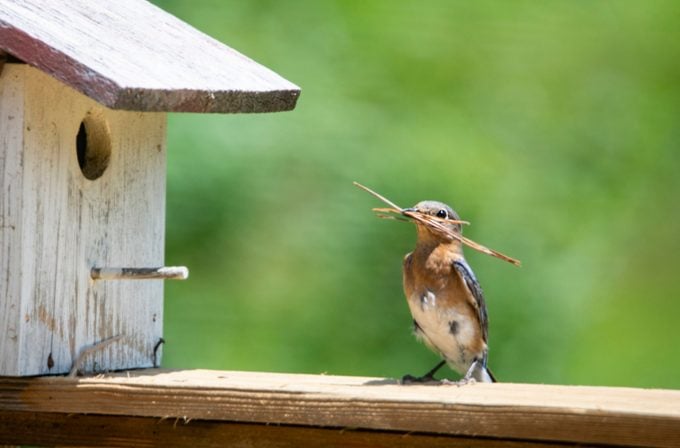
Leave clusters of natural nesting material including dried leaves, grass clippings, small dead twigs, or pine needles throughout your yard for nesting birds. Avoid using hair or string.
Psst—mourning doves are the fastest nest builders. Learn more about mourning dove nests.
What Birds Nest in Your Yard?
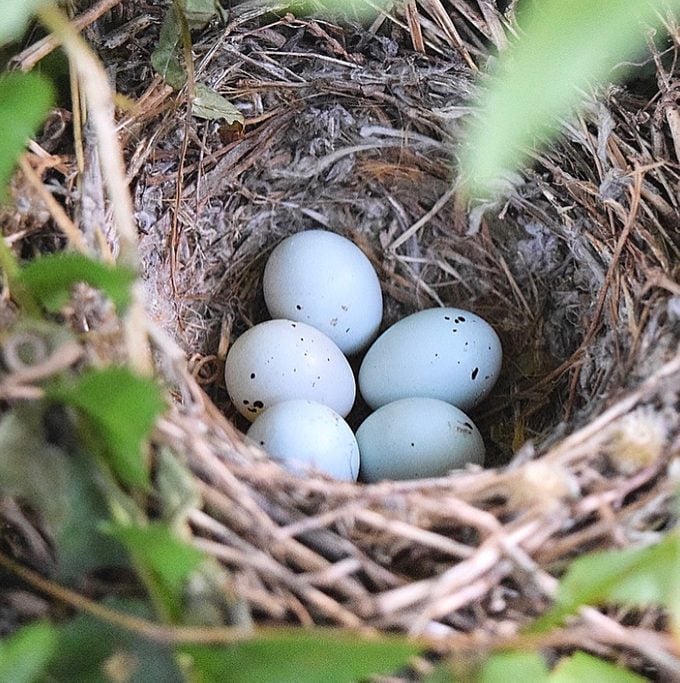
Birds & Blooms readers shared stories about the fliers that raise young in their backyards.
“We have nesting robins, house wrens and finches, cardinals and mourning doves. Recently we added bluebird houses in hopes that those visitors would move in,” Thomas Bessinger says.
“Mostly house sparrows, but there are a few bluebirds and a family of downy woodpeckers in our front yard,” Megan McCloud says.
“Carolina chickadees! Their brood graces us with its cheerful presence,” Sarah Miller says.
“I walk my leashed dog through my wooded backyard. We’re careful where we walk—we might step on a nest or see down-covered ruffed grouse, turkey or woodcock chicks. The woodcock babies are so cute with their long bills!” Karen Holmes says.
“Northern cardinals always raise young in my rose garden. They like to build their nests between the taller stems among the thorns for protection,” Jennifer Broadstreet Hess says.
“Barn swallows made their mud nests on our window ledges several springs ago, but one nest fell. My husband took an old loaf pan, nailed it up and gently placed the intact nest into it. The parents approved and continued to raise their young,” Pat Rittscher says.
Next, learn to identify bird eggs by color and size.
